I. The Historical Context
For centuries, Vietnam's cultural landscape has been enriched by its Vietnam performing arts, deeply rooted in the nation's history and identity.
The ancient Dong Son bronze drums stand as a testament to this enduring legacy, showcasing figures of dancers and musicians that hint at the significance of music and dance traditions from time immemorial.
Traditionally, music held a sacred role, predominantly serving religious ceremonies rather than public amusement. It was only later that music and dance emerged as key components of Vietnam's cultural expression, weaving themselves into the fabric of social life and celebration.
Vietnam's musical heritage is as diverse as its people, comprising the Kinh (or Viet) majority and over fifty ethnic minority groups, each contributing to the mosaic of the nation's musical genres.
This heritage can be broadly categorized into dieu bac, the northern mode with its Chinese influences, and dieu nam, the southern mode, echoing the slower, more sentimental rhythms of ancient Cham culture.
Vietnam performing arts, a vibrant thread in this tapestry, mirrors the life and spirit of the Vietnamese countryside through various forms such as lullabies (hat ru in the north, ru em in the center, and au o in the south), work songs (ho), and romantic ballads (ly).
These tunes not only entertain but also encapsulate the essence of rural life and its myriad emotions.
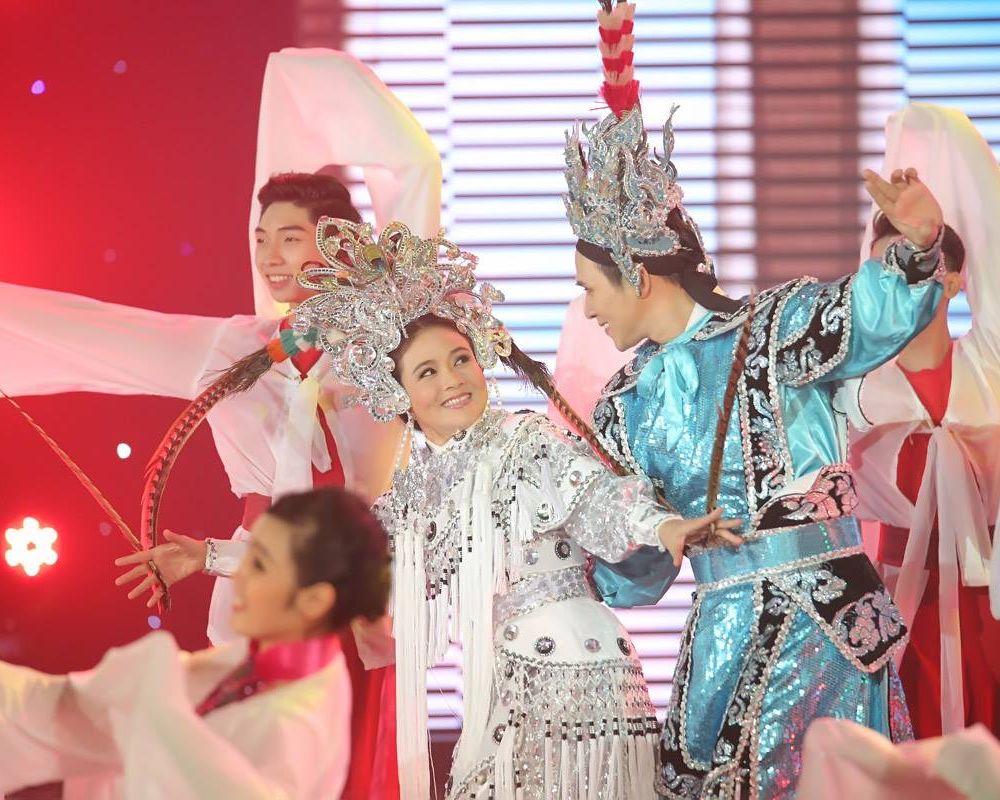
Costumes in Cai Luong
A pivotal moment in the evolution of Vietnam performing arts was the emergence of the call-and-response dialogue song, a genre that resonates across Southeast Asia.
This playful, flirtatious courting game involves poetic exchanges between males and females, showcasing their wit and lyrical prowess. Among the Kinh majority, this form evolved into the distinct art of quan ho, a sophisticated style of romantic folk singing rooted in the Red River Delta.
>> Read more: Vietnam Religion Need To Know Before Traveling
II. Explore Vietnam Performing Arts
1. QUAN HỌ
Quan Ho is more than just a musical genre; it's a cultural tradition that fosters community and friendship between villages through ket cha, a custom of establishing bonds through song.
Characterized by cappella performances, intricate vibrato techniques (nay hat), and improvised lyrical duels, Quan Ho is a testament to the technical and emotional depth of Vietnam Performing Arts.
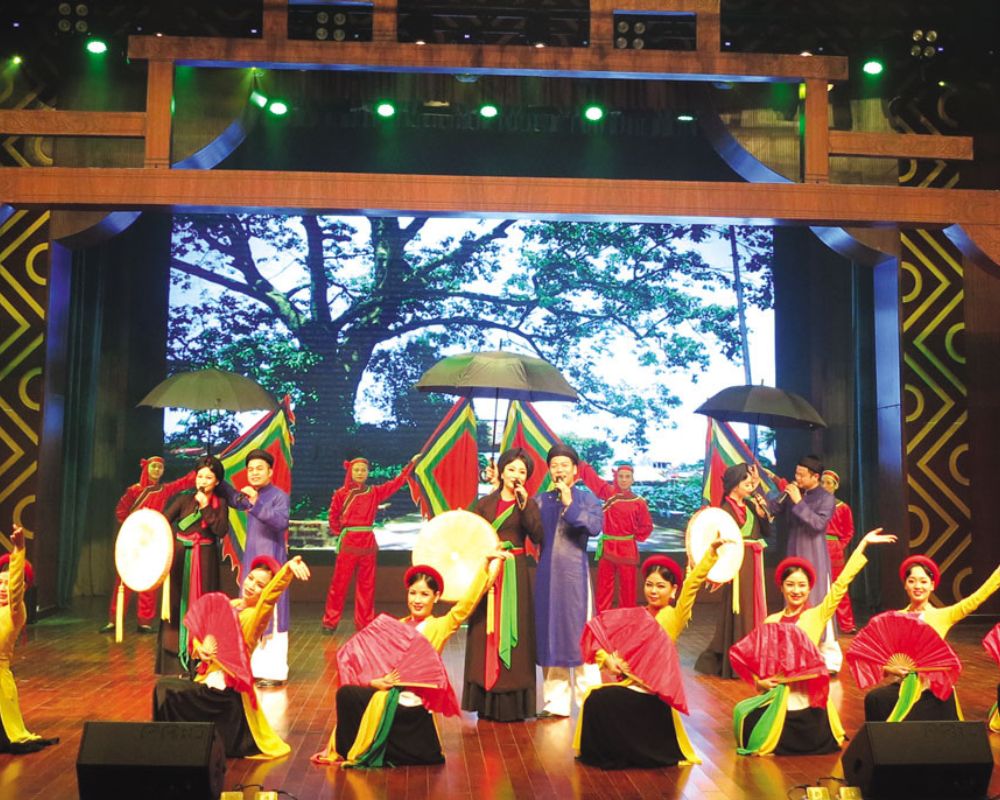
Enjoy Quan Ho at stage
With over 180 songs still performed in about 40 villages, particularly in Bac Ninh and Bac Giang provinces, quan ho remains a vibrant part of Vietnam's cultural heritage, celebrated in festivals such as the Hoi Lim Quan Ho after the Tet festival.
2. COURT MUSIC
The history of Vietnamese court music mirrors the country’s complex cultural identity, shaped by both indigenous traditions and external influences.
Following the establishment of an independent Vietnamese kingdom in the 10th century, the nation's rulers adopted and adapted the courtly traditions of their formidable Chinese neighbors.
This cross-cultural exchange was enriched further by the incorporation of musical elements from the Hindu kingdom of Champa in southern Vietnam.
During the Le dynasty (1428-1527), Vietnam saw the formal establishment of systematized court music, which catered to various religious and social occasions.
The majority of these royal dances aimed to convey wishes of happiness, prosperity, and longevity to the sovereign and his family. These musical categories, while initially influenced by Confucian and Cham traditions, evolved into a uniquely Vietnamese expression of court life.
The westernization of the royal court at Hue marked a period of decline for traditional court music, especially under the reign of Bao Dai, the last of the Nguyen kings, who was educated in France. By the 20th century, these traditions were seldom practiced.
However, since the late 1980s, there has been a concerted effort to revive court music in the old imperial capital, spearheaded by the Thua Thien Hue Provincial Traditional Arts Company and the Hue Royal Palace Arts Troupe.

Costumes when performing court music
3 CA TRU
Ca tru, a traditional Vietnam performing arts, represents a unique blend of musical and poetic beauty, with roots that can be traced back to the Ly dynasty (1010-1225).
Often characterized as sung poetry, ca tru is more than just vocal performance; it is a sophisticated art form where music plays an indispensable role alongside the poetry.
This art form is renowned for its intricate vocal techniques and the use of specialized instruments that together create a captivating auditory experience.
A typical Ca Tru ensemble consists of three main performers, each playing a crucial role in the performance. The central figure is the female singer (cai nuong), who not only delivers the sung poetry but also plays the phach, an instrument made from wood or bamboo that is struck with two sticks to keep rhythm.
Accompanying her is the kep, a musician who plays the dan day, a long-necked, three-stringed lute with ten frets, providing the melodic foundation of the piece.
The ensemble is completed by the trong chau, a drummer who follows the rhythm set by the singer or the song itself, adding depth and texture to the performance.
An interesting aspect of Ca Tru performances is the tradition of using bamboo cards. Historically, before a performance could commence at a communal house, private home, or inn, guests would purchase bamboo cards.
These cards were then offered to the performers as a token of appreciation, with each singer receiving payment proportional to the number of cards collected.
This practice is the origin of the name ca tru, with a meaning song, and tru referring to the cards, thus translating to "card songs."
Despite thriving during the French colonial era, ca tru was stigmatized due to its association with a form of entertainment akin to the geisha system, where young singers (co dau) entertained wealthy men with songs, drinks, and opium. This led to its suppression following the August Revolution in 1945.
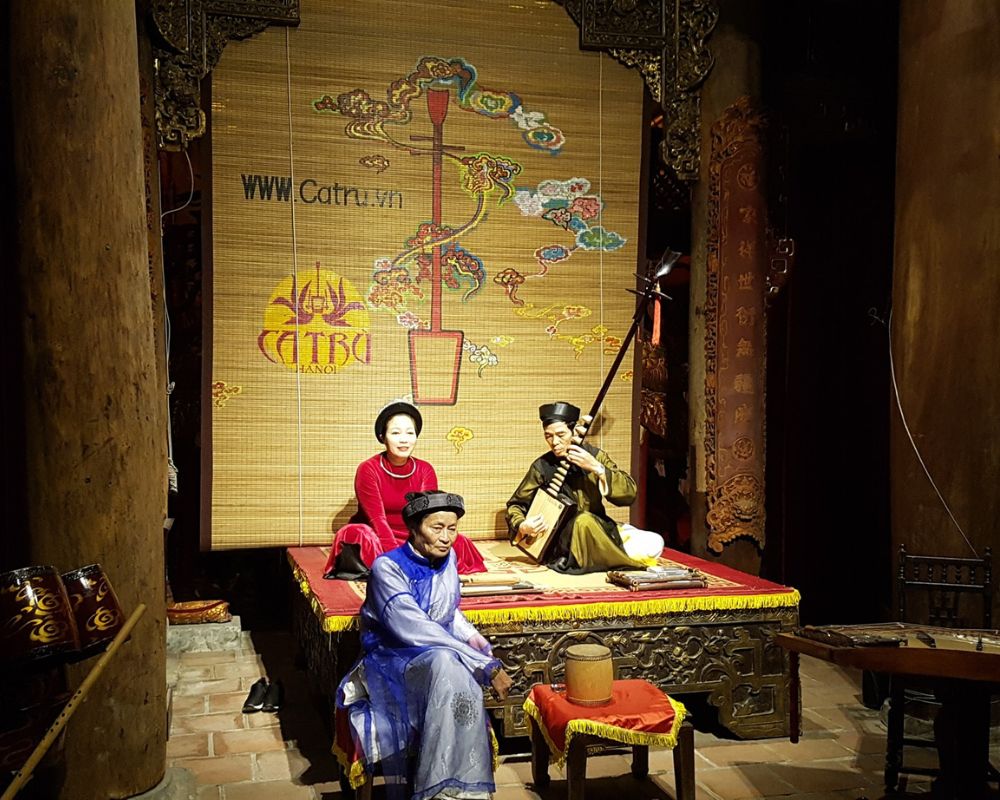
Stage Ca Tru with 3 artist
However, recent years have seen a revival of ca tru, with the Hanoi Ca Tru Club leading the charge in rediscovering and promoting this art form.
The club not only hosts regular performances but also organizes an annual ca tru festival, aiming to preserve and celebrate this tradition that was recognized by UNESCO in 2009 as an Intangible Cultural Heritage.
3. THEATRE
The farce known as Tro he, which was produced during the Tien Le dynasty (980-1009), is the oldest theatrical performance that has been documented in Vietnam.
Two new forms of theater evolved during the Tran period (1225-1400): hat giau mat, which consisted of masked performances, and hat coi tran, which consisted of coat-less plays.
In today's world, these antiquated styles of theater are no longer practiced. The kinds that are performed now, such as cheo, hat tuong, and cai luong, are a combination of court theater and folk performances, with some influences from other countries.
4. CHEO
Cheo, an art form as ancient as the Vietnamese nation itself, embodies the spirit of the community and the rhythm of rural life. Its origins, deeply etched in the cultural fabric of Vietnam, can be traced back to the engravings on Bronze Age drums and urns.
The term "cheo" itself, derived from the Chinese word tieu, meaning laughter, hints at the essence of this art form: to entertain and to provoke thought through humor and wit.
Performed predominantly in the northern regions of Vietnam, cheo has transcended its geographical origins to be celebrated as a national treasure.
This genre adheres to traditional conventions established in the 16th century by Luong The Vinh, who provided a structural framework for the dramas. Within this framework, actors improvise, bringing to life the script with their creativity and flair, making each performance unique.
A cheo performance is a communal affair, with musicians positioned to the right of the stage, playing an array of instruments including drums, gongs, rattles, stringed instruments, and flutes.
Uniquely, the initiation of the play and the approval of performances are signaled by the audience through the beating of a large drum, creating an interactive atmosphere where spectators play an active role in the unfolding drama.
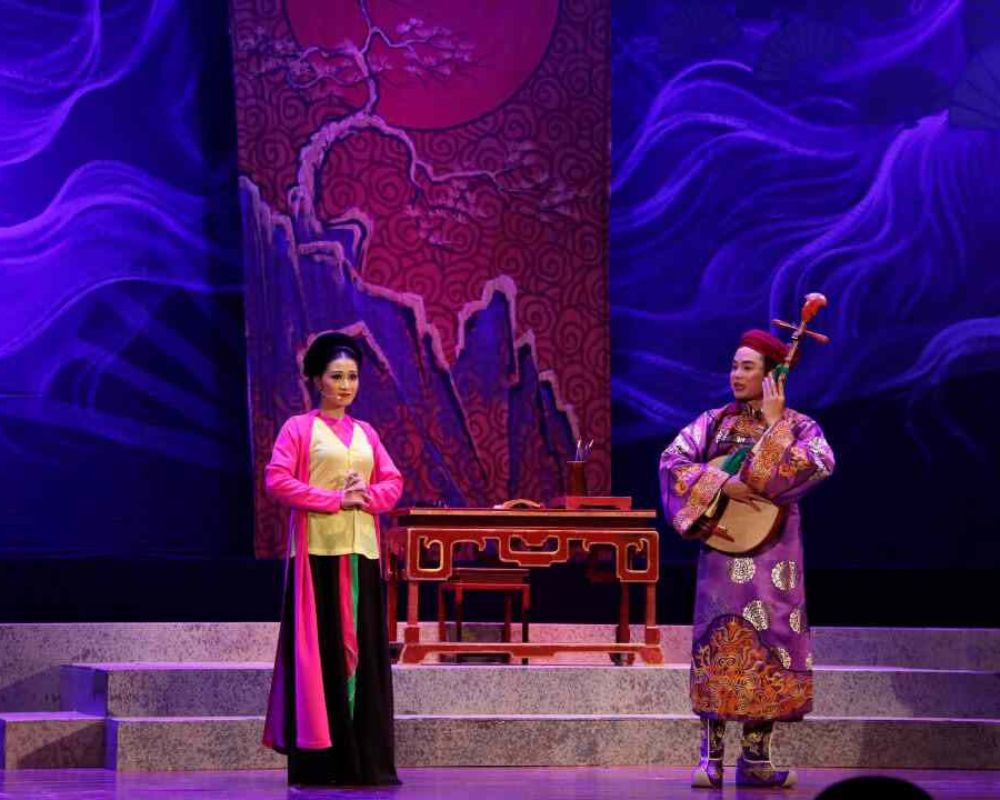
Two artists perform Cheo on stage
In stark contrast to the elaborate costumes and makeup of Hat Tuong, Cheo utilizes simple attire to convey character types reminiscent of the Italian commedia dell'arte, such as the drunk old man, the Confucian scholar, the coquette, and the clown.
This simplicity in presentation underscores the art form’s accessibility and its emphasis on storytelling over spectacle. The dynamic interaction between performers and audience members is a hallmark of cheo, enhancing the communal and participatory nature of the experience.
The Cheo Theatre in Hanoi not only endeavors to preserve ancient classics but also fosters the creation of new works addressing modern issues like drug abuse and AIDS, targeting rural audiences. These efforts reflect cheo's adaptability and its enduring relevance in contemporary Vietnamese society.
Despite its rich heritage and cultural significance, cheo faces challenges in the modern era, with declining audiences and the lure of commercial entertainment.
Professional cheo companies are finding it necessary to diversify, blending traditional elements with more commercial forms of entertainment to captivate today's audiences and ensure the survival of this cherished art form.
>> Read more: Vietnam Hill Tribes Things You Need To Know
5. HAT TUONG
Hat tuong, unlike the indigenous cheo, is a theatrical form that made its way to Vietnam from China during the Tran dynasty in the 13th century.
Brought by Ly Nguyen Cat, a prisoner of war who became a Vietnamese citizen, hat tuong introduced to Vietnam the intricacies of Chinese drama, including its makeup, costumes, masks, stylized gestures, and the emphasis on heroic and noble themes.
Originally catered to the elite, hat tuong is known for its elaborate introduction to the drama's storyline, with each character presenting their role directly to the audience.
The minimalist stage setup, utilizing symbolic props and guided by Confucian virtues, contrasts with the rich narrative and character development.
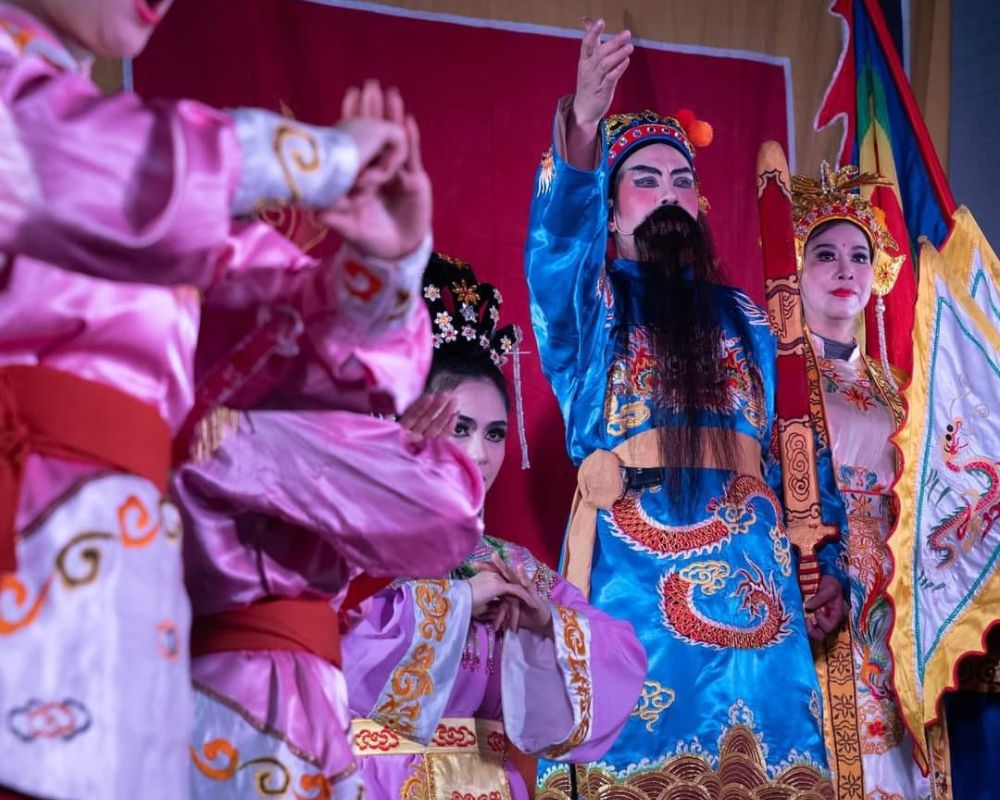
Tuong artists often have impressive costumes and heavy makeup
Over time, hat tuong underwent significant Vietnamese adaptation, incorporating women in female roles and expanding the orchestra with Indian influences from the Cham culture.
Today's hat tuong performances feature a diverse orchestra with cymbals, gongs, drums, tambourines, flutes, and a range of stringed instruments like the dan nhi and dan bau, adding layers of musical complexity that enhance the dramatic experience.
6. CAI LUONG
Cai Luong, emerging in southern Vietnam in 1920, modernized the classical Chinese narrative for Vietnamese audiences. Influenced by European theatrical forms, cai luong transitioned to a spoken-drama format, opting for shorter acts and focusing on emotional depth and psychological themes, facilitated by free dialogue.
While traditional Vietnamese theatre has seen a decline in audience numbers, Cai Luong has managed to maintain its popularity by integrating contemporary cultural elements, including modern characters, relatable plots, and popular music.
This adaptability has allowed Cai Luong to continue thriving, reflecting the evolving tastes of its audience.
Cai Luong performances today are accompanied by a mixed ensemble of Vietnamese and Western instruments, showcasing a harmonious blend of traditional and modern sounds.
With around 30 professional troupes nationwide, Cai Luong stands as a prominent pillar of Vietnam performing arts, actively contributing to the development of Vietnamese spoken drama.
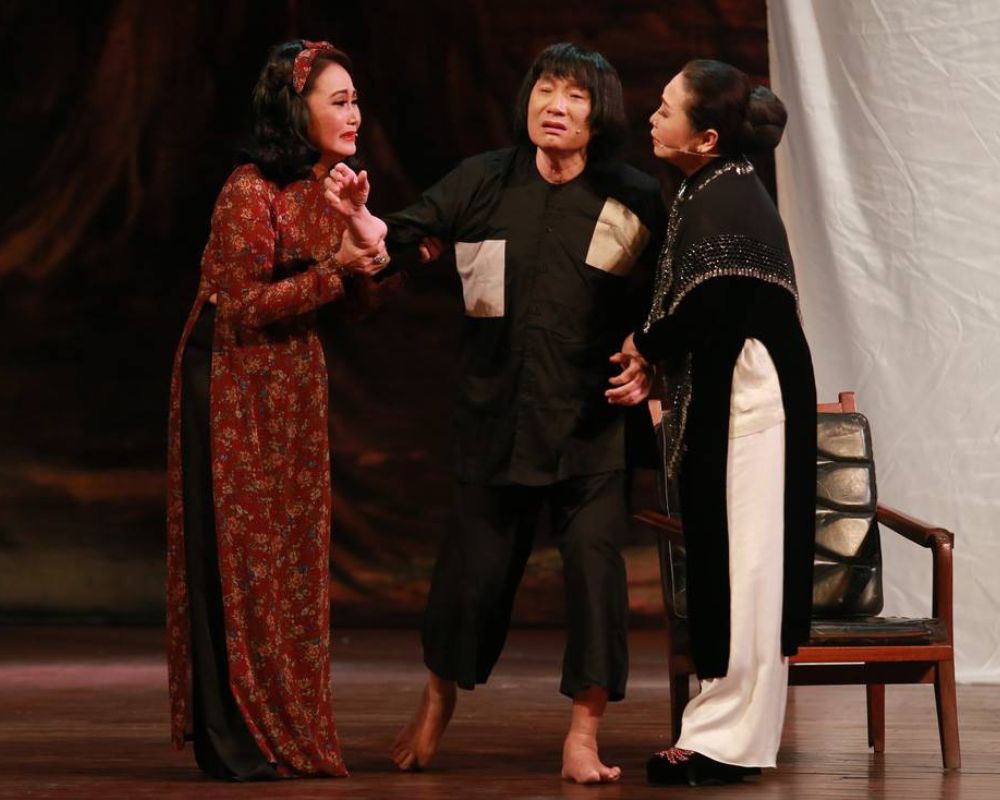
Famous cai luong artists in Vietnam perform on stage
7. BALLROOM DANCING
In a surprising embrace of Western culture, ballroom dancing has flourished in Vietnam, particularly in major cities like Hanoi. Dance halls dedicated to the art of ballroom dancing—where couples can waltz, tango, and foxtrot into the night—have become popular venues for socializing and entertainment.
These establishments often feature waiters who can step in as dance partners, addressing the imbalance between the number of women and men present.
This phenomenon highlights a unique intersection of Western influence with Vietnamese social habits, creating a vibrant scene where tradition and modernity dance in tandem.
8. FUNERAL MUSIC
Vietnamese funeral music stands as a poignant reminder of the country's rich musical landscape, originally evolving to mark significant life events such as marriages, births, and deaths.
This genre faced near extinction during the 1960s when the government imposed restrictions on religious practices and beliefs deemed superstitious.
Despite these challenges, funeral music has experienced a revival and is now commonly performed at funerals, serving as a means for families to express their grief and commemorate their loved ones.
The practice of khoc thue, or "rented tears", involves hiring musicians and singers to perform laments at funerals. Traditionally, only men were permitted to perform these roles, but the emergence of all-female bands signals a significant shift in this tradition, reflecting broader changes in Vietnamese society and culture.
